The Celebrity Tortoise Breakup That Rocked the World
In 2011, after nearly a century together, Galápagos tortoises Bibi and Poldi called it quits. We still don’t know why.
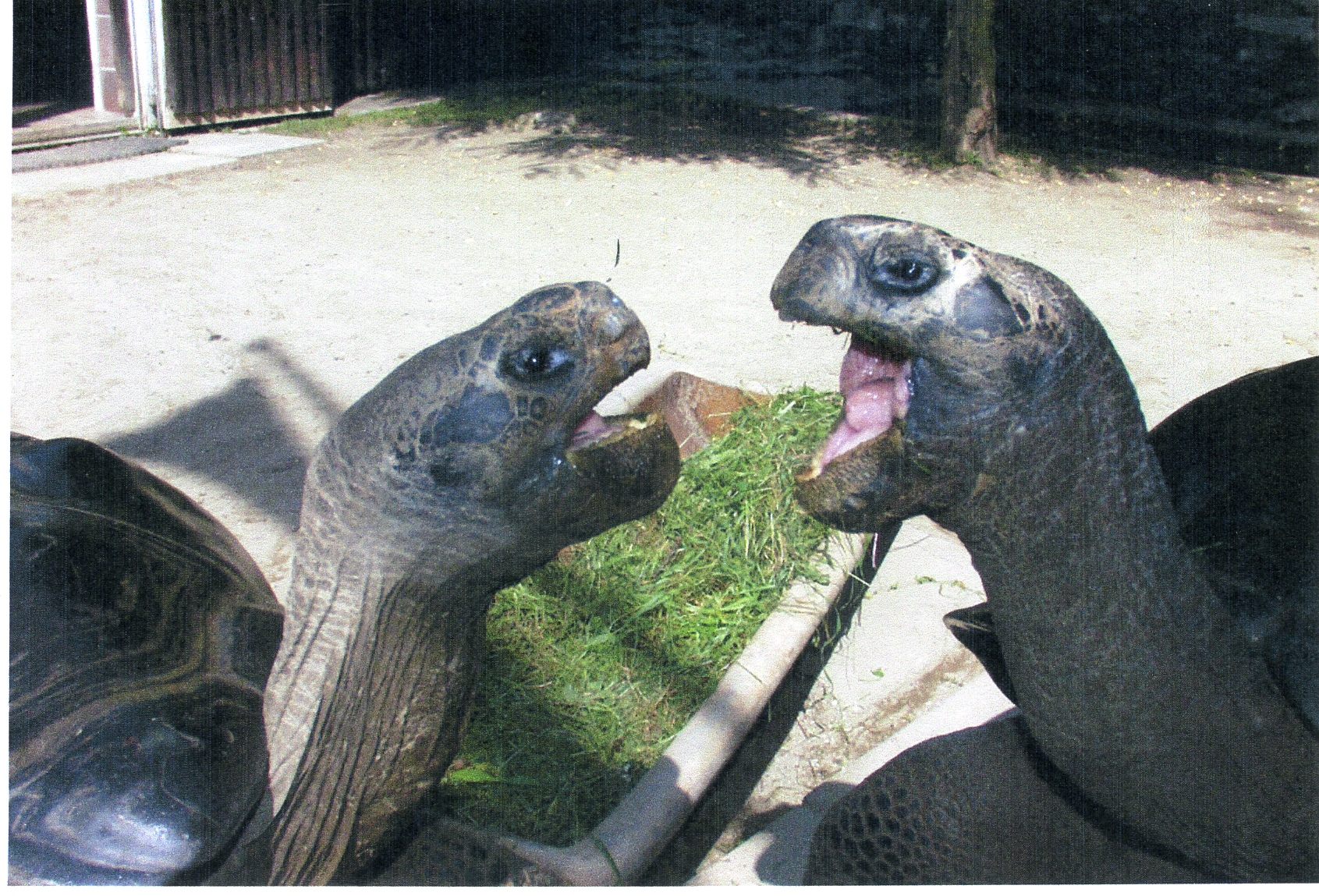
Why do relationships end? The question plagues experts and laypeople alike. Circumstances change. The spark goes away. An attribute that once intrigued you is suddenly repellant.
Literary scholars comb through Gone With the Wind. Music fans analyze Roy Orbison. But animal lovers have their own rich and mysterious text: the story of Bibi and Poldi, the Galápagos tortoises that were together for 90-odd years and then, suddenly, weren’t.
Bibi and Poldi, who live at the Reptilienzoo Happ in Klagenfurt, Austria, were a perfect match. Poldi is handsome and sociable, with bright eyes and a fondness for neck scratches. Bibi has a regal bearing and a dramatic streak—a human friend once compared her to Greta Garbo. They share hobbies: Both like loitering in sunny spots, as well as in shady spots. They have a mutual love of tomatoes. And they are both Galápagos tortoises.
They also have a common history: Although the early details of their lives are hazy, both hatched around 1897, grew up together at a zoo in Switzerland, and likely first hooked up in their second decade of life, during the Roaring Twenties. By the time they moved to Austria together in the late ‘70s, they had built a longstanding, comfortable relationship, with a healthy physical component.
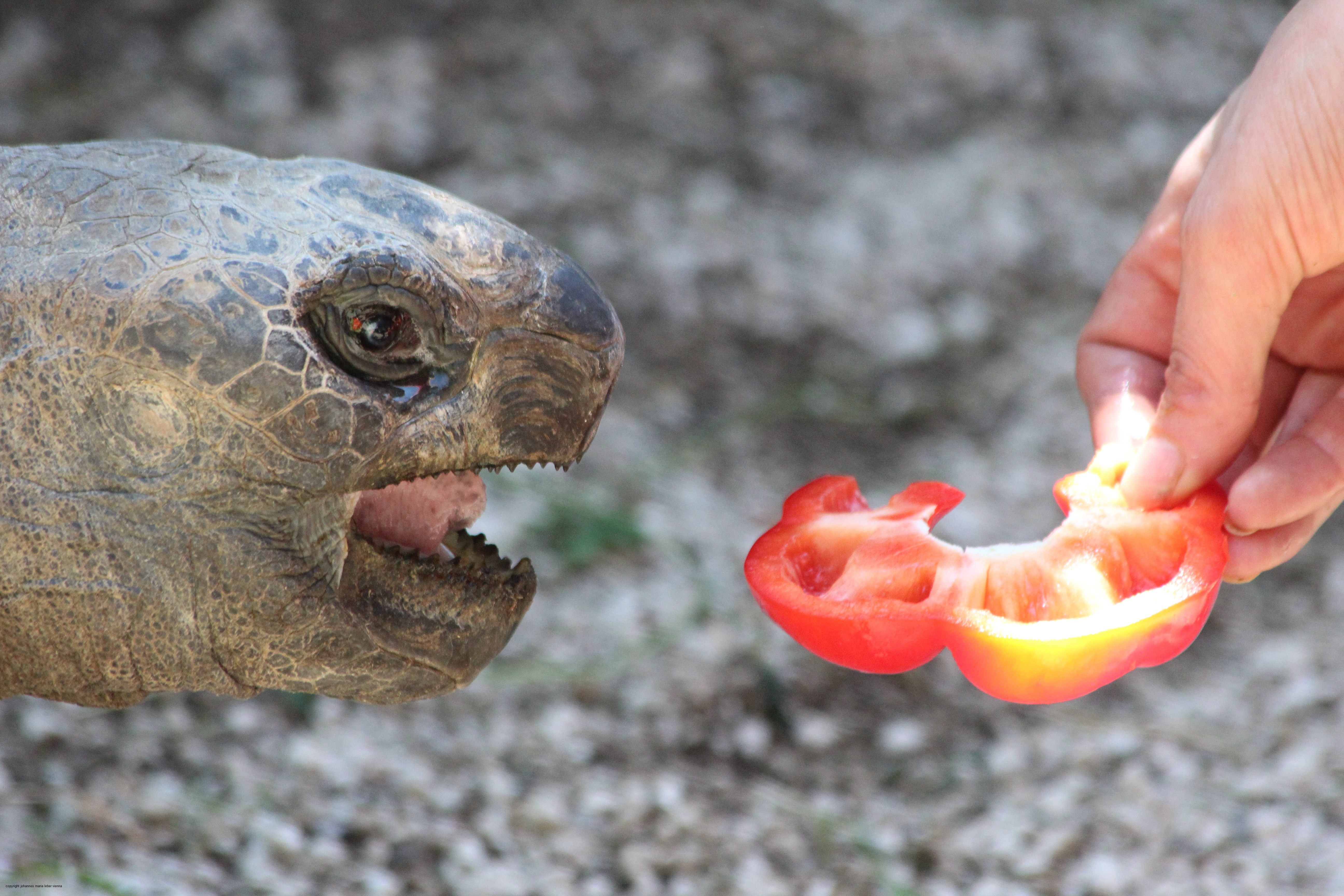
But one day in November of 2011, something changed. A keeper approached their shared home, only to see Bibi rear forward and bite a large chunk off of Poldi’s shell. (She drew blood.) Galápagos tortosies lack teeth at any age, but they do have powerful, jagged-edged jaws. If the two kept fighting like this, the keepers were afraid they’d kill each other. And so the tortoises—who had spent nearly a century sleeping with their shells touching—were separated.
A split like this affects a whole community. Reptilienzoo Happ is “a family business,” says the zoo’s director, Helga Happ. It was founded by her husband, Friedrich Happ, in 1976; the two met there, and bonded over a shared “passionate interest for reptiles,” according to the zoo website’s history page. Although Friedrich passed away in 2000, the couple’s daughter, son, and granddaughter all work there, caring for about 1,000 individual creatures, from puff adders to water dragons. “We are filled with love for our animals,” Happ says. “They too are part of our family.”
So it makes sense that, when Bibi and Poldi were on the outs, the Happs and their colleagues tried to patch things up. After all, this was a couple that—whether they knew it or not—had made it through the Great Depression, two World Wars, and the millennium. Surely one little spat wouldn’t do them in.

The keepers tried everything they could think of. After they moved Poldi into a temporary bachelor’s apartment, they tried arranging a date for the pair. “We were hoping that they would make up during their first spring outing,” Happ told local paper Kleine Zeitung at the time. They did not. Bonding games also failed, as did romantic tomato meals. “They tolerate each other’s presence just as long as it’s not too cold, not too hot, and there’s plenty of food,” Happ’s son Johannes told British magazine The Lady. But there was no love there.
They tried counseling, too. “We have keepers talking to them and trying to engage the two in interacting,” Happ told the Independent in June of 2012. When an outside expert suggested Bibi might have had some kind of breakdown, they gave her an intensive check-up. She was of sound mind and shell.
They even attempted a romantic comedy-style gambit: An artist made a model tortoise out of plastic, and it did shifts in each enclosure, with the idea that a low-risk “newcomer” might comfort Poldi and soften Bibi. Poldi fell for it for a few days, but Bibi went straight for the cold shoulder—in photos, she steadfastly ignores her fake husband while munching on a branch. “We get the feeling they can’t stand the sight of each other anymore,” Helga Happ told the Austrian Times, defeated.
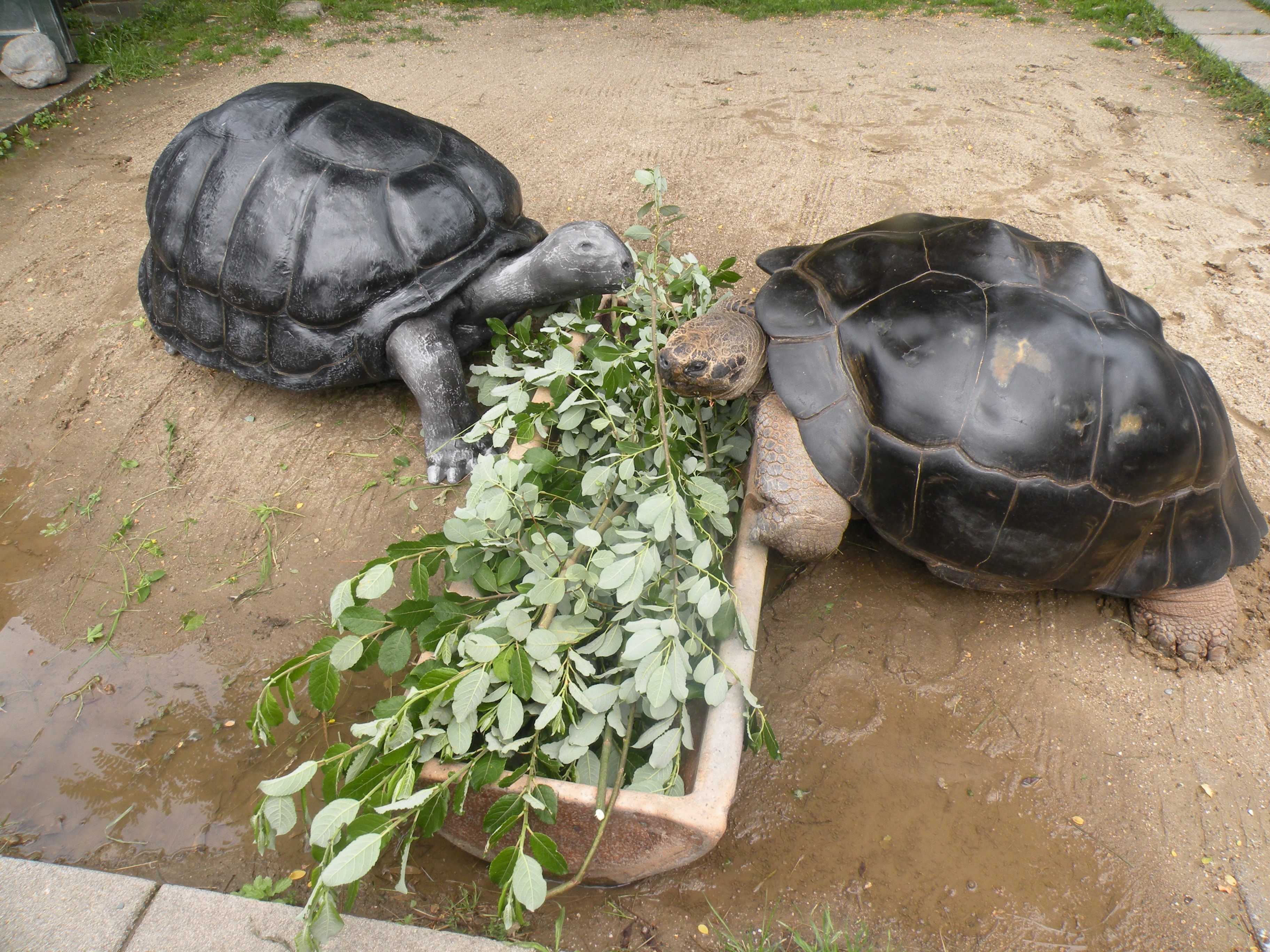
Humans root for love to last. We’re not picky about the species involved. Thousands of people have signed petitions to keep animal mates together, whether they’re polar bears slated for different zoos or overly amorous children’s zoo donkeys. When the world’s most famous same-sex penguin couple, Roy and Silo of New York’s Central Park Zoo, called it quits in 2004, Andrew Sullivan wrote that “it rocked the gay scene.”
The end of Bibi and Poldi was particularly affecting because the two had already overcome so many odds. In the wild, Galápagos tortoises generally don’t go for monogamy at all, let alone lifelong togetherness. Many captive ones are enrolled in extensive breeding programs, to help ensure the various species’ survival after decades of devastation by introduced animals, hungry whalers, and, increasingly, climate change. One of the best-known Galápagos tortoises, Lonesome George, is famous for not mating much at all, despite prolonged and creative effort from everyone around him. He was the last Pinta Island tortoise in the world, and when he died, his species went with him.
Anthropomorphic concerns were also at play. Publications worldwide took the opportunity to put their own spin on the gossip. The New York Daily News published what they called “a newly surfaced photo” of the tortoises yelling at each other. Jezebel accused Poldi of mouth-breathing. But beneath much of the coverage ran an undercurrent of despair. As TIME put it, “If [they] can’t make it work, what hope do the rest of us have?”
Although the tortoise breakup news cycle is long over, Reptilienzoo Happ is still living with the actual event, and its aftermath. Seven years after the split, “Bibi [still] does not want to have anything to do with Poldi,” Happ says. About two years ago, she and the keepers reluctantly stopped trying to reconcile the two tortoises, and began some construction projects. “We have built two houses, created two outdoor facilities, and made two baths,” Happ says.

Bibi and Poldi now live in matching condos, like divorcees who each made out well in the split. Although Happ says her own thinking about long-term relationships hasn’t changed, “the separation makes me and the zookeepers and my family a little sad,” she admits, “because each of the [tortoises] lives alone.”
The zoo employees couldn’t bring themselves to give up entirely. A wall separates Bibi’s enclosure from Poldi’s. In one section of it—the part that divides the two halves of the garden—the keepers installed a glass window. If they want to, either tortoise can gaze through at their former paramour, and think about old times.
So far, it hasn’t been enough. Bibi likes to hang out in the garden and eat the grass. But when she looks up and sees Poldi, “she hisses like a snake,” says Happ. This message, at least, is clear: “She does not want to live with him.”


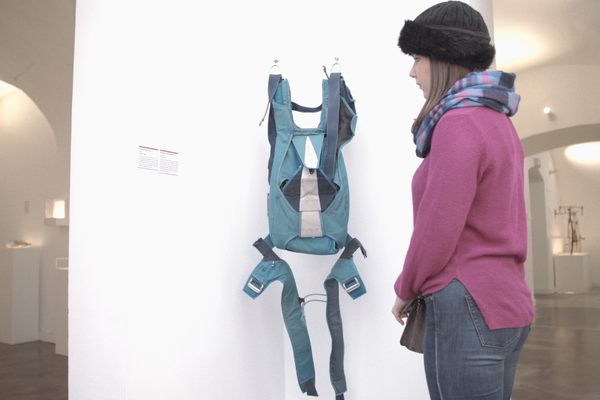

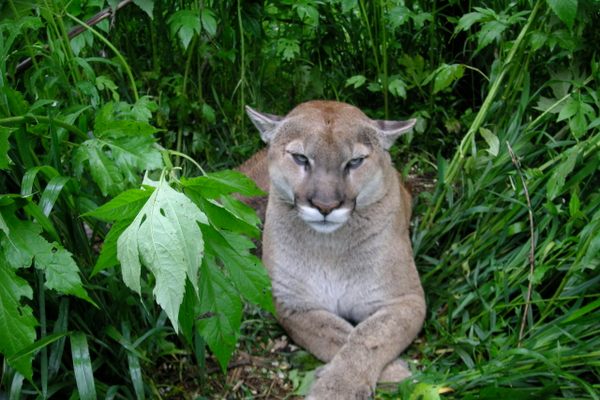













Follow us on Twitter to get the latest on the world's hidden wonders.
Like us on Facebook to get the latest on the world's hidden wonders.
Follow us on Twitter Like us on Facebook